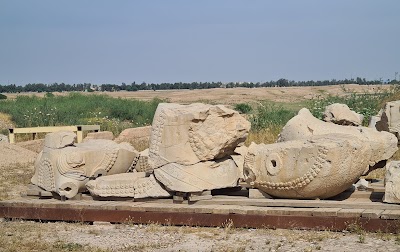Shush (Ancient Susa) (شوش)
Overview
Shush, known in ancient times as Susa, is a remarkable archaeological site located in the Khuzestan province of Iran. This ancient city, whose history dates back to around 4000 BCE, was one of the most important cultural and political centers of the Elamite, Persian, and later Islamic civilizations. For travelers venturing into the heart of Iran, Shush offers a captivating glimpse into the ancient world, rich with historical significance and archaeological wonders.
Historical Significance
As one of the oldest continuously inhabited cities in the world, Shush played a pivotal role in the rise and fall of various empires. It was the capital of the Elamite kingdom and later became a prominent city in the Achaemenid Empire, serving as a residence for several Persian kings. The city is mentioned in the Bible and is known for its connection to the story of Esther, adding a layer of cultural relevance that appeals to both historians and religious pilgrims alike.
The ruins of Shush reveal a fascinating blend of architectural styles influenced by different cultures over millennia. Visitors can explore remnants of the ancient city, including the stunning ziggurat of Chogha Zanbil, a UNESCO World Heritage site. This temple complex, dedicated to the Elamite god Inshushinak, showcases impressive mud-brick architecture and offers a glimpse into the religious practices of the time.
Key Attractions
While in Shush, travelers should not miss the Shush Archaeological Museum, which houses an extensive collection of artifacts unearthed from the region. The museum features beautiful pottery, ancient tools, and inscriptions that tell the story of the civilizations that thrived in this area. The knowledgeable guides here can provide invaluable insights into the exhibits, making the visit even more enriching.
Another must-see is the Citadel of Shush, a large fortress built during the Islamic period. The citadel's walls and towers still stand strong, offering panoramic views of the surrounding landscape. Walking through the ancient streets of Shush, visitors can almost hear the echoes of the past, as the city served as a crossroads for traders and travelers from various cultures.
Local Culture and Cuisine
Shush is not just about its ancient history; it is also a living city with a vibrant local culture. As you stroll through the city, you’ll encounter friendly locals who are often eager to share their stories and traditions. The city is known for its colorful bazaars, where you can find traditional crafts, textiles, and spices. Engaging with local artisans can provide travelers with unique souvenirs and a deeper understanding of Iranian culture.
Don't miss the opportunity to savor the delicious local cuisine. Shush is famous for its diverse flavors, influenced by both Persian and Arab culinary traditions. Be sure to try khorest (stew) dishes, chelo kebab (rice with grilled meat), and sweet delicacies like baklava. Dining in local eateries allows visitors to experience authentic Iranian hospitality while enjoying the rich flavors of the region.
Travel Tips
When planning your visit to Shush, consider the best time to go. The ideal months are typically from October to April when the weather is cooler and more pleasant for exploration. Dress modestly to respect local customs, and be prepared for warm hospitality from the locals.
Transportation to Shush is convenient, with options available from major cities like Ahvaz. While public transport is accessible, hiring a local guide can enhance your experience, providing insights that might not be available in guidebooks.
In conclusion, a visit to Shush is a journey through time, offering travelers a unique opportunity to explore one of the world's oldest cities. With its rich history, stunning archaeological sites, and welcoming culture, Shush is a treasure trove for any adventurer looking to delve into the heart of Iran's ancient heritage.






